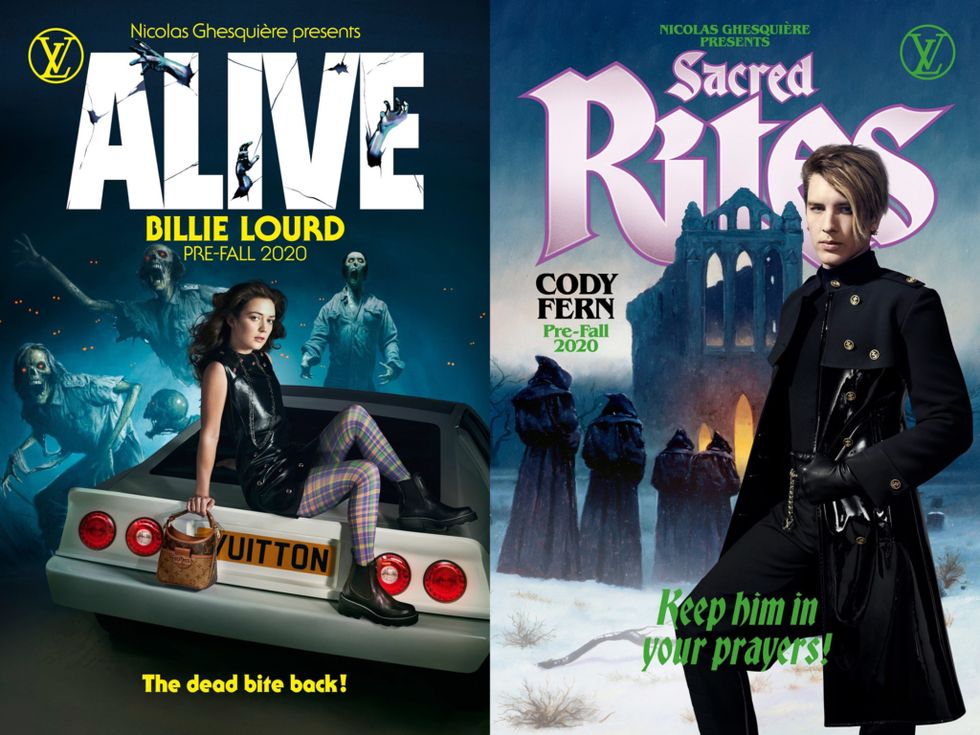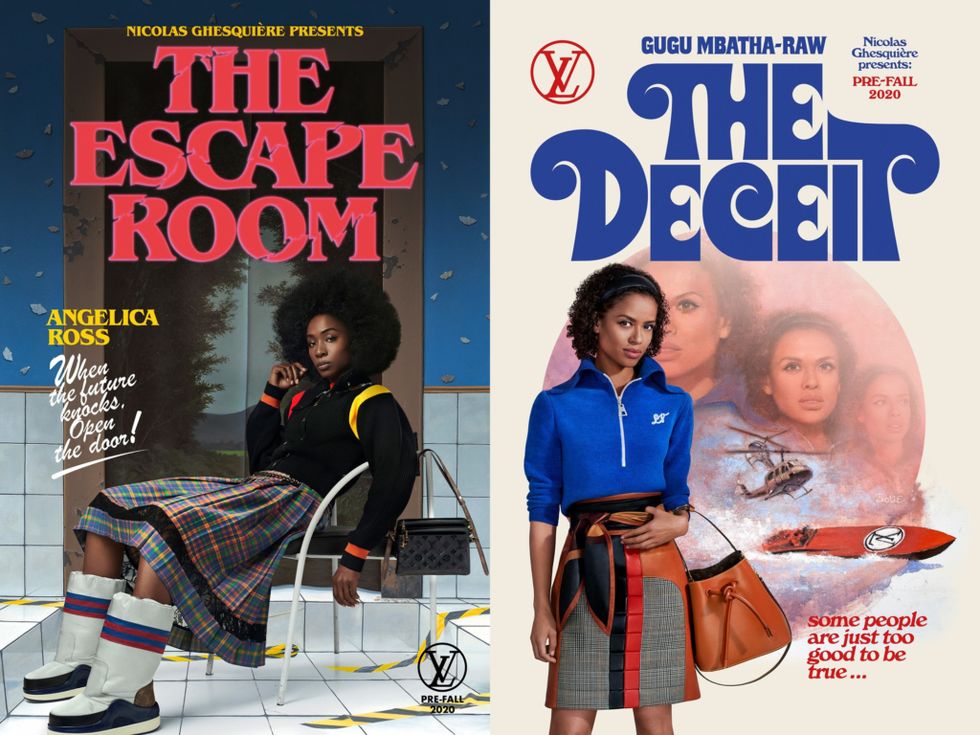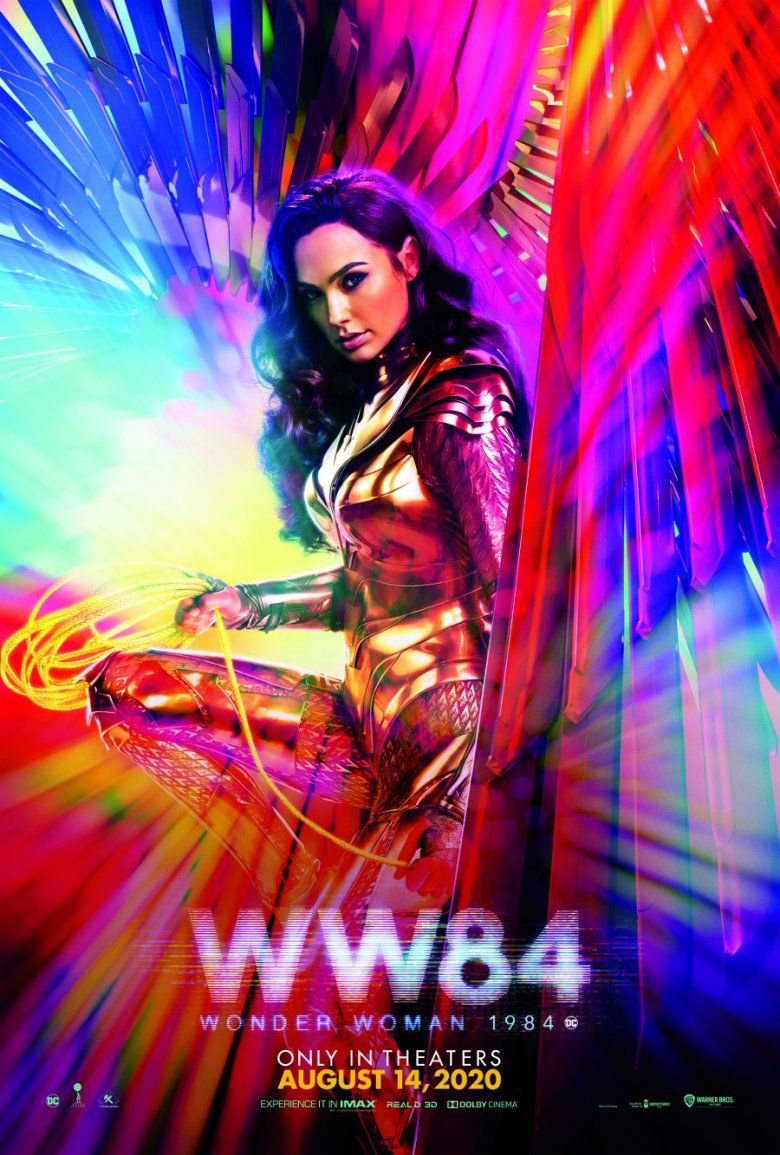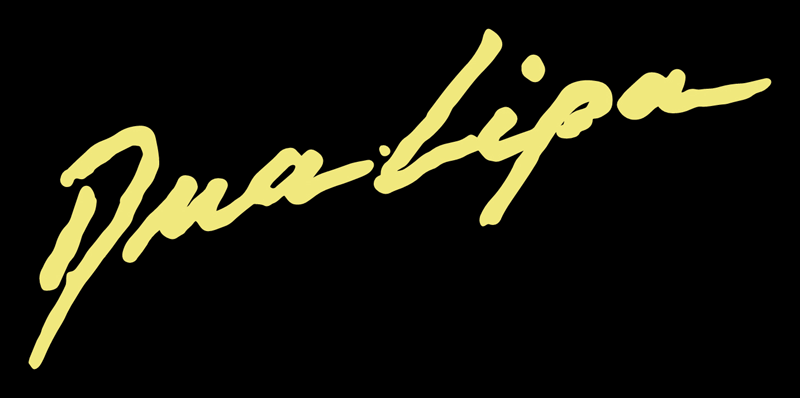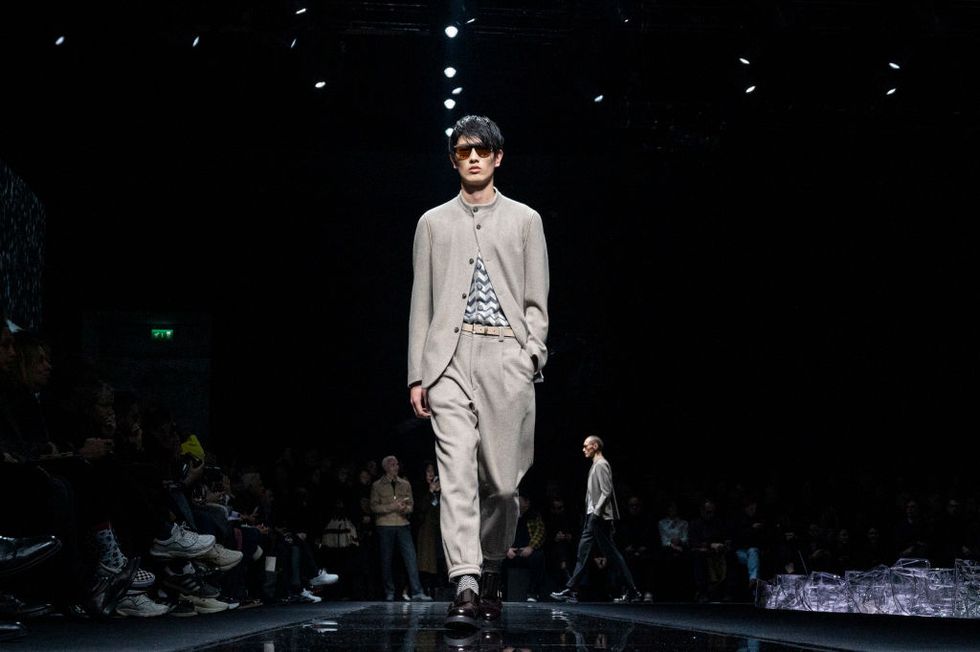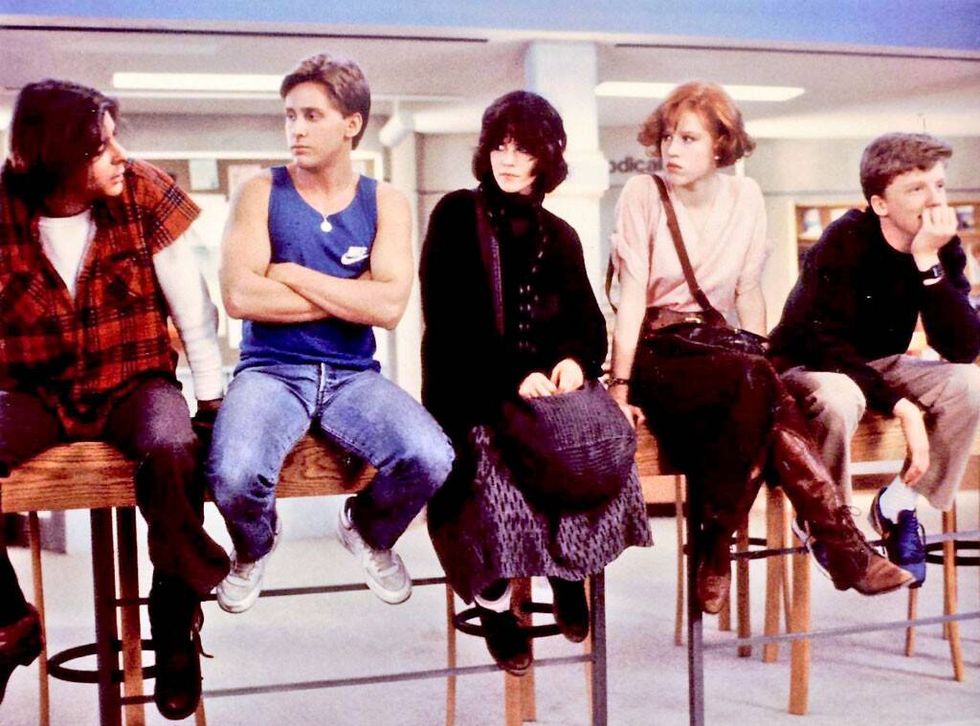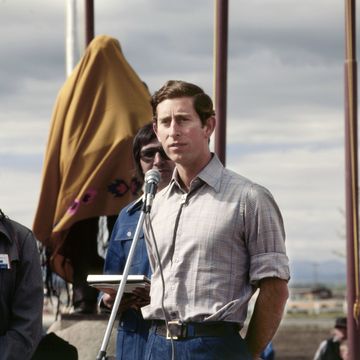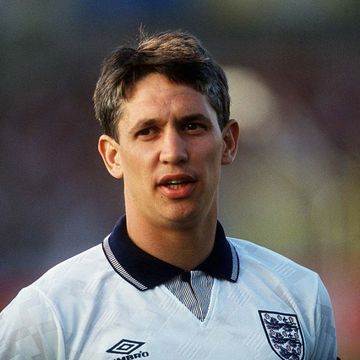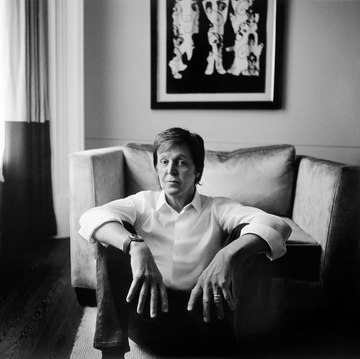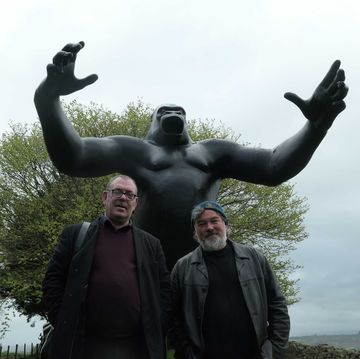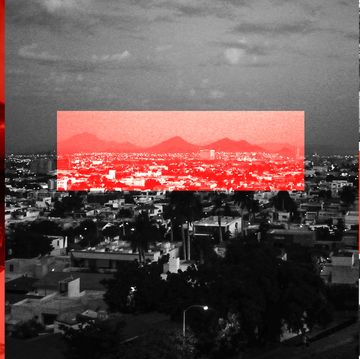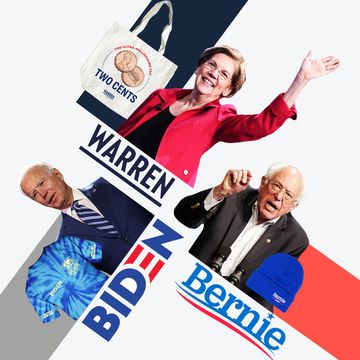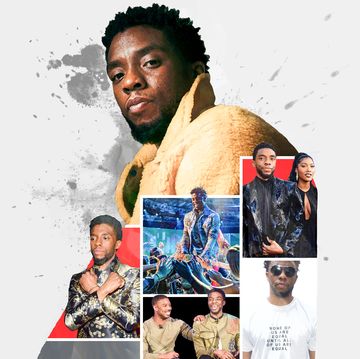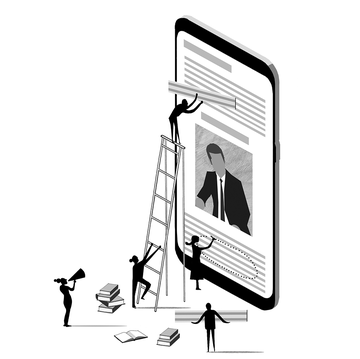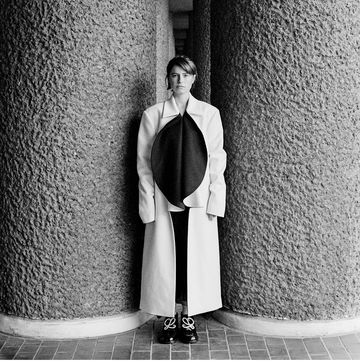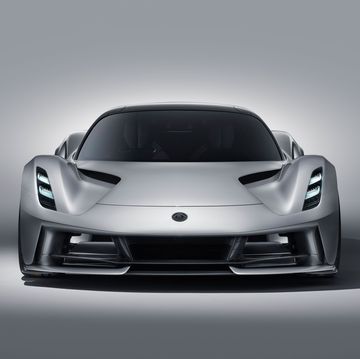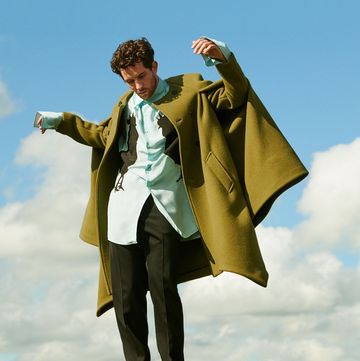“The Eighties bands,” sing The Strokes on their new album. “Where did they go?” Judging from current playlists, they haven't gone far. This week’s NME’s Best New Tracks rundown on Spotify includes The 1975’s ‘If You’re Too Shy (Let Me Know)’, a paint-by-numbers Tears For Fears homage, complete with outrageously cheesy sax solo. Also ‘Aries’ by Gorillaz, a New Order-inspired art pop number featuring signature bass from Peter Hook, alongside vocals from current house darling Georgia. And ‘Fire In Bone’, the new one from The Killers, that sounds like Peter Gabriel.
Elsewhere, the TikTok lockdown dance hit ‘Blinding Lights’ by The Weeknd is a synth-happy patchwork of Michael Sembello’s ‘Maniac’ from Flashdance and A-Ha’s ‘Take On Me’; the arms-aloft, skipping-steps dance routine it inspired something Molly Ringwald might have broken out during The Breakfast Club. (It’s taken from an album called After Hours, the title a tribute to Martin Scorsese’s 1985 film of the same name.)
Then there’s The Strokes themselves, whose comeback album after seven years variously nods to Joe Jackson, the Human League and (once again) New Order. Their single ‘Bad Decisions’ so closely resembles the 1981 hit ‘Dancing With Myself’ by Billy Idol’s new wave band Generation X, that Idol and co-writer Tony James get co-writing credits.
Its not just pop music. Eighties references were all over the men’s fashion shows this season, including boxy oversized double-breasted suits and high-waisted, voluminous and pleated trousers that recalled Giorgio Armani’s pioneering work on American Gigolo, bright coloured print shirts that would have looked correct in Do The Right Thing and rave-y bleached out jackets and jeans. Double denim, high top sneakers, leather jackets, baggy jumpers and flouro are also in vogue. For its recent ad campaign Louis Vuitton has mimicked the covers of Eighties horror paperbacks, something that came after William Peter Blatty, author of The Exorcist, gave them permission to print the cover of his novel on a series of graphic T-shirts.
For film and TV commissioners the Eighties are the gift that keeps on giving. Netflix shows Glow, Wet Hot American Summer, Narcos, Fuller House and The Americans all mine the decade for eye-catching design and block colour throwback detail; Glow’s big-haired, bright-spandex lady wrestlers executing their sleeper holds to the glossy soundtrack of Roxette, Rose Royce and Sylvester. Black Mirror is a regular love letter to the video games, technology and fonts of co-creator Charlie Brooker’s youth. Stranger Things continues to operate as a Reddit thread of winking references to Close Encounters Of The Third Kind, Cujo and Ghostbusters, its two stars Winona Ryder and Sean Astin famously being themselves breakout stars of the Eighties. Meanwhile the feverish excitement around this year’s Wonder Woman 1984 (trailer music: a remix of New Order’s ‘Blue Monday’) has a lot to do with that movie’s setting, despite the fact that fellow crime-fighting capers X-Men: Apocalypse and Guardians Of The Galaxy Volume I and Volume II alighted in that same decade first.
Everyone knows fashion is cyclical and that previous decades come in and go out as reference points. The difference with the Eighties is that it has become a constant. In 2013 we were dancing to Daft Punk’s ‘Get Lucky’, in 2015 Tame Impala’s ‘Let It Happen’, in 2017 LCD Soundsystem’s ‘Call The Police’ and last year Vampire Weekend’s ‘Harmony Hall’. The last time there were so many Eighties-sounding songs around it was the Eighties. Its less ‘the decade that taste forgot’, more the decade we can’t forget. At least, in terms of pop culture. Why might this be?
“The reason we keep coming back to it is that it was the zenith of machine-perfect dance music,” says Guy Pratt, the Grammy-winning musician who played on albums by Michael Jackson, Roxy Music and Madonna, currently offering tutorials in his mind-boggling bass skills on tracks like ‘Like A Prayer’ and ‘Earth Song’ as Guy Pratt’s Lockdown Licks. “Pop music is finite and in the Eighties it reached a peak of what you could do. That’s why in the Nineties, everything went backwards. Britpop just sounded like the Sixties. It’s the one era of pop music you still hear on the radio everywhere because it doesn’t sound dated.”
And if it’s not the original songs, it’s new songs that sound like those original songs.
“One of the nicest compliments I’ve had was a comment under one of my videos, someone asking if that was me playing on the Dua Lipa single,” Pratt says.
He’s talking about ‘Break My Heart’, the sparkling pop stomper based on the rubbery baseline and choppy guitar riff from INXS’s 1987 hit ‘Need You Tonight’ (INXS get a writing credit). It follows Lupa’s January hit ‘Physical’ which was built around a sample of the 1981 Olivia Newton-John single of the same name. Dua Lipa’s new album, titled Future Nostalgia, was part-produced by Stuart Price, the musician-producer who fronts Eighties throwback band Zoot Woman (one album was called Things Are What They Used To Be) and oversaw Madonna’s 2005 album Confessions On A Dance Floor, itself a tribute to the dance-pop of the Eighties – including Madonna’s own hit singles. Due Lipa has spoken often of her love for that decade’s music. Her manager recently told The New York Times he agreed to work with her after asking what kind of career she wanted, and she referenced Madonna.
Of course, if you’re setting out to be a pop star, Madonna’s career isn’t a bad benchmark to set. Part of the indelibility of the Eighties is surely that they gave us globe-straddling superstars like Prince, Michael Jackson and Madonna, the likes of which we’re unlikely to ever see again – the circumstances that created them are no longer there, even if the talent is. It was also a decade of technological breakthrough, a time that explored what music journalist Pete Paphides, in his new Eighties-packed childhood memoir Broken Greek, quoting Saint Etienne, calls ‘the strange and important sound of the synthesiser’. Plus, part of the Eighties’ appeal today is nostalgia: musicians, designers and TV writers who are now in positions where they can make things that reference the things they loved as children. (The Duffer Brothers with Stranger Things.) But that’s not always the case. Dua Lipa is a child of the Nineties, for instance. Can it possibly be that Eighties culture really does stand the test of time? That it is quantifiably good?
“Regardless of personal taste, its undeniable that the Eighties were an important decade in terms of its impact on mens style,” says Olie Arnold, style director at Mr Porter. “There was confidence in the air, not seen since the Sixties, that empowered men to start exploring new dress codes and experimenting with their own personal style in a bolder way. This has allowed it to transcend and infiltrate the fashion calendar seasons after season, primarily because style was experimental, carefree and the fundamentals of classic masculinity were challenged. Ultimately, what it got right was the fun, from bright bold shirts under power suits to making tracksuits and athleisure mainstream.” (For more Eighties-inspired looks on this season’s catwalks, Arnold points to “oversized shirts worn in an unbuttoned and fluid way, particularly with the addition of jewellery shown from brands like Jacquemus and Ami. Camp colour shirts in loud prints and colour blocking are also trends trends that are big.”)
Charaf Tajer, creative director of the super-hip shirting brand Casablanca, known for its pastel tones and eye-popping patterns, is also a fan." "It was the era of Vivienne Westwood getting going," he says. "Of Kenzo and Versace. Hermès, Chanel from the Eighties, that was a great era of design for them. It was also when high fashion became ready-to-wear. Fashion became more accessible, and more fun. The colours are a big inspiration for me.”
Chris Clews has a broader theory about this.
“The Eighties were an explosion of creativity and the individual, like no other decade we’ve had before or after,” he says. “It was like somebody threw a glitter bomb on the ground and it exploded. By the Nineties pop culture began to be packaged, they would test, test, test because they were investing so much money in a singer or a movie. We’re not taking chances today. The Eighties was the last time creatives would throw stuff out and we, the consumer, would decide what was pop culture. It was a magical decade.”
To be fair Clews may be biased. He’s the author of What ‘80s Pop Culture Teaches Us About Today’s Workplace: Unexpected Business Lessons From 10 Of The Great 80s Movies That Defined A Generation, as well as its sequel, What ‘80s Pop Culture Teaches Us About Today’s Workplace: 10 More Iconic Movies, Even More Totally Awesome Business Lessons. He signs his emails ‘stay rad!’ He’s already named the two rescue dogs he plans to adopt: Ferris, and Bueller. Still, he really believes in this stuff.
“Let me give you an example,” he says down the line from his home in Fort Lauderdale. “I was at the grocery store and I had a Breakfast Club t-shirt on. I’d always heard that young people really embraced [Eighties filmmaker] John Hughes. And the girl who was bagging our groceries – young girl – said ‘Oh my God, that’s my favourite movie. My friends and I all love The Breakfast Club’. I said, ‘How old are you?’ She said ‘15’.”
Clews told her that was the age he was, when the movie came out, and became a generation-defining touchstone. How could it appeal to teenagers four decades later?
Her reply: “‘Because the characters are real. They’re us. They have the same issues with their parents that we have, and we don’t see that in today’s movies. In high school movies today everybody’s had surgery and the guys drive hundred thousand dollar cars. We see ourselves as those [Breakfast Club] characters because they were raw, and not made up. Things weren’t perfect – and that’s what made it great’.”
Clews is so sold on the decade he teaches business conferences using examples from Eighties movies. For example: how The Goonies shows us that sometimes the person being overlooked is the same one who can solve the problem.
That sounds like a fun conference. But, playing devil’s advocate, couldn’t he run the same course with Nineties movies?
“Absolutely you could, maybe you could get three books out of it,” he says. “With the Eighties I feel like there’s 10-12 books, because that when the explosion of creativity allowed all of those great movie to happen.”
Actually, he says, for his next book he’s going to include one Nineties movie. “But,” he says, “it’s a movie that people assume had to be written in the Eighties.”
Follow Guy Pratt’s Lockdown Licks here
Like this article? Sign up to our newsletter to get more delivered straight to your inbox
Need some positivity right now? Subscribe to Esquire now for a hit of style, fitness, culture and advice from the experts


